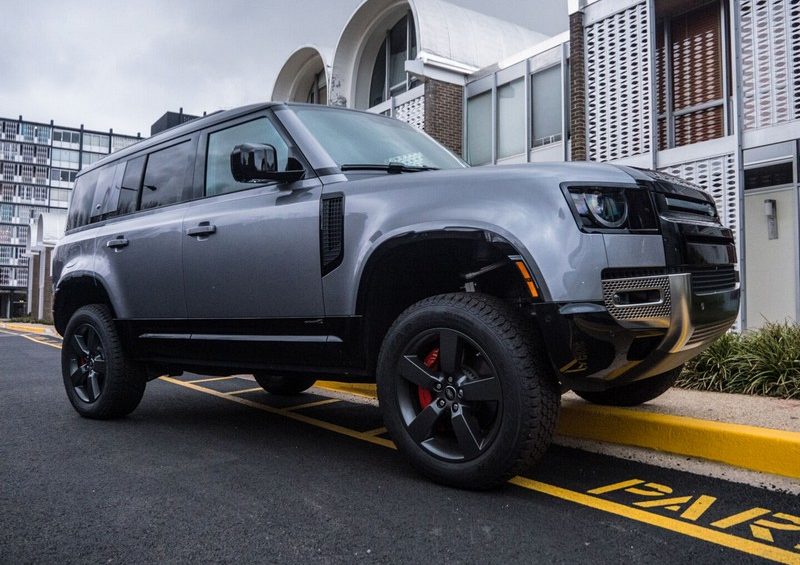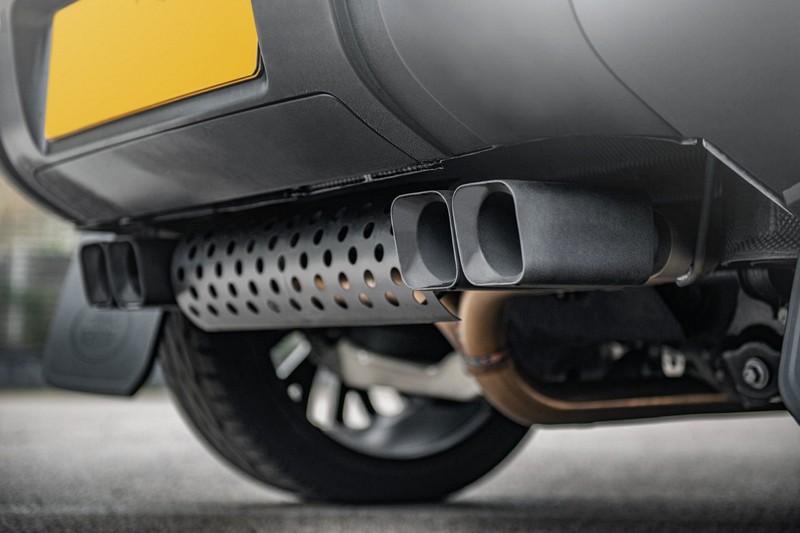Off-road utility is paid for at the gas pump.
wasn’t expecting to be quite as charmed as I was by the Land Rover Defender. We first saw the new Defender at 2019’s Frankfurt auto show, where it proved to be a hit by marrying rugged looks and off-road skills with a healthy helping of tech. Even though I fell for its looks, I was trepidatious about spending a week with the vehicle, having failed to gel with most Land Rovers in the past. As I found out, those fears were mostly misplaced, as the Defender was not at all agricultural in behavior, unlike its 20th-century forerunners.
But before we go any further, an apology of sorts—or at least an explanation. Last September, Land Rover held a media first-drive event for the SUV, where journalists got to spend a couple days driving up and down Mount Equinox in the Taconics. Alas, Ars couldn’t attend because of scheduling conflicts—instead, we used that time to test a couple of electric vehicles. So although the Defender is built to go off-road, the best I managed during my week with it was some radical parking, as seen in the gallery above.
Therefore, I don’t know how well it fords water up to 35.4 inches (900mm) deep. I don’t know how well it approaches breaks-over or departs from obstacles (at angles of 38˚, 28˚, and 40˚, respectively). I can’t really tell you how good the permanent four-wheel-drive system—with a twin-speed transfer case and optional locking center and rear differentials—works on rough ground. I can’t opine on how well the various software systems (Terrain Response 2, All Terrain Progress Control, and Hill Descent Control) manage the task of keeping you right-side up and moving in the intended direction. Which makes this review somewhat lacking, as that stuff is basically the Defender’s raison d’être. Mea culpa.
But enough about what I can’t tell you—let’s talk about the stuff I can. Our test Land Rover was the range-topping Defender 110 X. At $83,000, this particular Defender is no steel-wheeled farm vehicle or aid-worker transport—those are available, with the cheapest Defender 90 starting at $46,100. (Expensive though it is, this Defender 110 X is still $9,000 cheaper than the cheapest Range Rover.)
Unlike earlier Land Rovers, the new Defender eschews body-on-frame construction for an aluminum monocoque chassis, which JLR says is three times stiffer than the old-fashioned approach. This design is related to the platforms used by the Jaguar I-Pace (called D7e)—as well as the Range Rover, Range Rover Sport, and Discovery (D7u)—but is its own thing (called D7x) that shares no body panels with those other vehicles.
In the old days, Defender 110s had a 110-inch (2,794mm) wheelbase; now the name simply signifies that you’re in the bigger of the two Defender bodies. The 21st-century Defender 110 actually has a wheelbase of 119 inches (3,022mm), although the short front and rear overhangs help disguise some of its 198-inch (5,018mm) length. (That’s with the rear tire included; take it off and the length is 187 inches/4,758mm.) The vehicle is also fairly wide at 79 inches (2,008mm) and rather tall at 77 inches (1,967mm). Given its size, the 110 is no featherweight, but at 5,035lbs (2,284kg), it’s a little lighter than I was expecting.
Under the hood—tastefully accessorized with some patches of plastic diamond plate—is a 3.0L turbocharged straight-six engine, which produces 395hp (295kW) and 406lb-ft (550Nm). Per Jaguar Land Rover’s 2017 pledge to electrify its entire lineup, the 110 is also a 48V “mild” hybrid; Land Rover has added a plug-in hybrid option to the Defender range, but there are no plans to bring it to the United States. Oh well.
There’s only a single choice of transmission, but it’s ZF’s excellent 8HP eight-speed automatic. And as already mentioned, there’s a two-speed transfer case and a bunch of other clever-sounding off-road pieces, both electronic and mechanical.
A constructivist interior
The chunky utilitarian theme—Land Rover calls it “constructivist”—continues on the inside. A powder-coated magnesium crossbar forms part of the structure of the dash as well as providing grab handles to make the vehicle easier to get into (and giving something to hold on to during strenuous off-roading). Trim pieces on the doors and elsewhere have exposed hex bolts, and the mix of materials is interesting both to look at and touch. I adored it, but my wife was less impressed; she also found the cabin a little hard to climb up into, despite the grab handle.
As befits a 21st-century Land Rover, there’s a decent array of tech onboard. The Pivi Pro infotainment system has a 10-inch screen mounted into that magnesium crossrail, and while there was a little input lag at times, it never did anything to really annoy me. Apple CarPlay and Android Auto are both present and correct, and a multitude of USB ports can be found in the front and back.
My most pleasant surprise came from the Defender’s on-road manners. I was expecting plenty of body roll and generally ponderous handling, but in fact it rode well. The 110 insulated the occupants from bumps and jolts, and its steering was direct. Sitting so high up provides an excellent view of the road, and the onboard cameras make the Defender easy to park.
So far, this all sounds pretty great, but the 110 is not all gravy. Officially, the EPA rates the Defender 110 X at 19mpg combined, 17mpg in the city, and 22mpg on the highway. But I never averaged more than about 13mpg, which is unacceptable. The early January weather was almost certainly a factor, as the cold was often too much for the engine’s stop-start function to operate, and the optional off-road tires couldn’t have helped. Whatever the cause, the resulting lack of efficiency is still hard to stomach
PHOTO GALLERY
[ngg src=”galleries” ids=”10″ display=”basic_thumbnail” thumbnail_crop=”0″]Article & Photo Credit: Jonathan M. Gitlin
Full Article: https://arstechnica.com/cars/2021/02/the-land-rover-defender-rugged-charming-but-drinks-like-a-fish/







